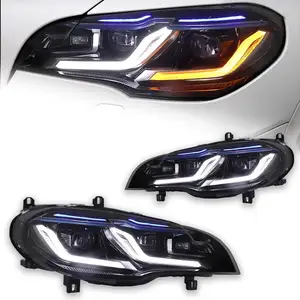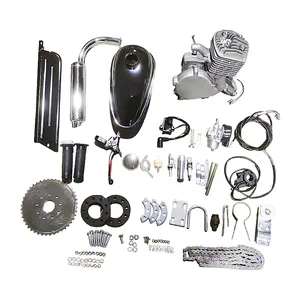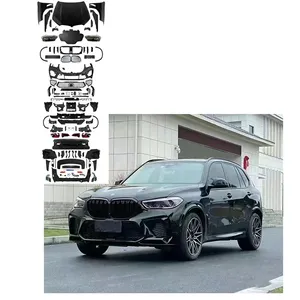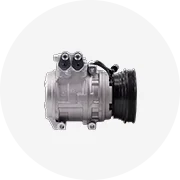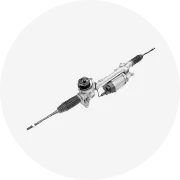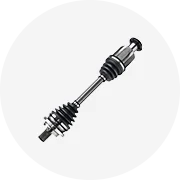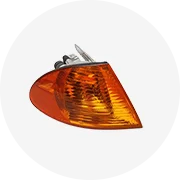Популярное в вашей отрасли






Кованые железные ворота декоративные украшения Штампованные Железные дверные украшения, используемые для элементов железных ворот
89,67 ₽
Минимальный заказ: 100 шт.







Дешевые кованые ограждения из розетки панели оптом декоративные кованые панели ограждения
175,35 ₽ - 201,26 ₽
Минимальный заказ: 200 акров

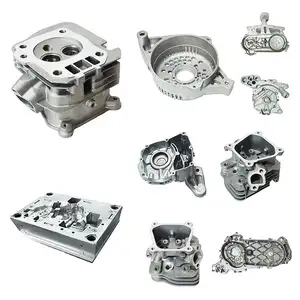





OEM изготовленный по индивидуальному заказу, литой металл, литой потерянный воск, литой алюминиевый чугунный камень, автостоянка, автомобильные запасные стальные детали
19,93 ₽ - 99,63 ₽
Минимальный заказ: 100 шт.







Аксессуары из кованого железа для украшения сада и дома, декоративные металлические панели для забора, детали из кованого железа
Готово к отправке
597,78 ₽
Минимальный заказ: 200 шт.
Доставка за штуку: 788,07 ₽






Детали забора, декоративная корзина для лука из кованого железа
249,08 ₽ - 348,71 ₽
Минимальный заказ: 100 шт.






Детали для украшения из кованого железа, Кованые балясины
78,71 ₽ - 98,64 ₽
Минимальный заказ: 500 компл.






Гарантированное изделие, размеры рисунка и кривизны, изделие из кованого железа, декоративная лестница
Готово к отправке
298,89 ₽ - 996,30 ₽
Минимальный заказ: 5 шт.
Доставка за штуку: 1 478,51 ₽






Забор из кованого железа, кованые декоративные детали для украшения, изогнутый S C круглый Сложный цветок
9,97 ₽ - 29,89 ₽
Минимальный заказ: 100 шт.






Детали для забора из кованого железа серии прокрутки, декоративные кованые железные розетки
19,93 ₽ - 79,71 ₽
Минимальный заказ: 500 шт.
Связанные запросы:
декоративные детали из кованого железадетали из кованого железадекоративные кованые железные деталикомпоненты из кованого железаоптовики деталей из кованого железадетали из кованого железа свиткиформы из кованого железадекоративные детали из кованого железа цветыкованое железо мпроизводитель компонентов из кованого железазавод по производству декоративного кованого железадекоративные компоненты из кованого железапроизводство компонентов из кованого железакольца из кованого железадекоративные изделия из кованого железа






HLT различные конструкции ограждения стальные элементы кованые железные компоненты главные ворота декоративные детали оптом
8,97 ₽ - 9,97 ₽
Минимальный заказ: 1000 шт.






Детали для перил из кованого железа, декоративные кованые железные балясины
249,08 ₽
Минимальный заказ: 500 шт.






Штамповка и сварочная Красивая кованая железная Роза декоративные детали
57,79 ₽ - 498,15 ₽
Минимальный заказ: 50 шт.






Промышленный Восточный дизайн, Литые алюминиевые ограждения, водонепроницаемые экологически безопасные детали ворот из кованого железа для улицы
5 977,77 ₽ - 29 888,85 ₽
Минимальный заказ: 10 м






Детали панели забора из кованого железа, детали забора для виллы
5 977,77 ₽ - 9 962,95 ₽
Минимальный заказ: 1 кв. м






Новейшие кованые железные цветы и листья для забора кованые декоративные детали кованые железные аксессуары на заказ
108,60 ₽ - 167,38 ₽
Минимальный заказ: 100 шт.

Декоративные внутренние кованые железные лестничные перила/Детали перил из кованого железа
8,97 ₽ - 199,26 ₽
Минимальный заказ: 1 шт.






Современные Запчасти для главных ворот, кованые железные раздвижные ворота
8 966,66 ₽ - 19 925,90 ₽
Минимальный заказ: 10 м






Декоративные кованые панели для садовых ограждений с порошковым покрытием, Термообработанные деревянные детали для продажи, используемые для сельскохозяйственных заборов
Готово к отправке
846,86 ₽
Минимальный заказ: 50 кв. ярдов
Доставка за штуку: 3 327,63 ₽






Качественная популярная конструкция кованая железная балясина кованые железные перила для лестницы балясины декоративные детали для лестницы
403,50 ₽ - 463,28 ₽
Минимальный заказ: 100 шт.

Современная Роскошная Европейская декоративная часть из кованого железа, легкая установка, горячее оцинкованное покрытие с порошковым покрытием, сварная низкая цена
Готово к отправке
112,59 ₽ - 1 026,19 ₽
Минимальный заказ: 10 шт.
Доставка за штуку: 511,10 ₽






Рекламные детали из кованого алюминия по низкой цене для украшения ворот
49,82 ₽
Минимальный заказ: 2000 упак.
Доставка за штуку: 34,88 ₽






Высококачественные кованые железные детали, кованые шпильки для ограждения, ворот, перил, украшение
54,80 ₽ - 59,78 ₽
Минимальный заказ: 1 шт.





Кованый твердый шаровой наконечник для ограждения из кованого железа
49,82 ₽ - 59,78 ₽
Минимальный заказ: 5000 шт.






Baodu, лидер продаж, китайское производство, высококачественные декоративные детали для лестницы из кованого железа
194,28 ₽ - 348,71 ₽
Минимальный заказ: 100 шт.






Литой металлический забор, Литые декоративные алюминиевые балясины, детали забора и перил
49,82 ₽ - 149,45 ₽
Минимальный заказ: 100 шт.
Доставка за штуку: 49 814,75 ₽











Аксессуары, декоративные детали из чугуна, кованые железные цветы
12,96 ₽ - 65,76 ₽
Минимальный заказ: 10 шт.






Заводские оптовые детали для кованого ограждения из кованого железа
1 494,45 ₽ - 2 988,89 ₽
Минимальный заказ: 1 компл.
Доставка за штуку: 2 243,66 ₽






Горячая распродажа, Современные внутренние кованые железные балясины, двойная корзина, кованые железные перила, декоративные части лестницы
104,62 ₽ - 483,21 ₽
Минимальный заказ: 500 шт.












Изготовленные на заказ декоративные аксессуары кованые детали из кованого железа для дверей
47 822,16 ₽
Минимальный заказ: 100 кв. м






Крышка основания для декоративной квадратной кованой лестницы из кованого железа-части лестницы (QB-161)
18,93 ₽ - 21,92 ₽
Минимальный заказ: 200 шт.
Доставка за штуку: 17,94 ₽






Декоративные литые кованые детали, декоративные кованые железные аксессуары, детали ворот из кованого железа
9 962,95 ₽ - 14 944,43 ₽
Минимальный заказ: 5 компл.






2019 современные декоративные ворота из кованого железа
4 981,48 ₽ - 19 925,90 ₽
Минимальный заказ: 1 кв. м












Подержанные короткие викторианские кованые железные панели для ограждения со стальной рамой, недорогие детали аксессуаров, включая наконечник для защиты ворот
1 681,75 ₽ - 3 585,67 ₽
Минимальный заказ: 50 компл.
Доставка за штуку: 10 833,72 ₽
Самые популярные категории
О декоративные детали из кованого железа
Забеспокоился о покупке подходящей. декоративные детали из кованого железа для вашего автомобиля? Alibaba.com предлагает самые качественные, надежные и проверенные запчасти для всех ваших автомобилей по самым доступным ценам. Эти. декоративные детали из кованого железа идеально подходят для всех ваших малых, средних и тяжелых транспортных средств независимо от их моделей. декоративные детали из кованого железа, представленные на сайте, доступны в различных размерах, формах, вместимость и вес в зависимости от требований вашего автомобиля.
Качество. декоративные детали из кованого железа вашего автомобиля играет важную роль в обслуживании и работе ваших транспортных средств, и вы не должны идти на компромисс с ними. Эти. декоративные детали из кованого железа на сайте изготовлены из прочных материалов, таких как металл и алюминий, рассчитаны на длительный срок службы и могут точно соответствовать вашей модели автомобиля. Поскольку эти. декоративные детали из кованого железа имеют одинаковую цену, вам также не нужно беспокоиться о расходах.
Alibaba.com позволяет настраивать их надежность. декоративные детали из кованого железа в соответствии с вашими требованиями, и вы можете просто разместить индивидуальный заказ на вашу модель автомобиля по номинальной стоимости. Эти. декоративные детали из кованого железа легко собрать и установить в ваш автомобиль для повышения производительности. Профессиональные инженеры гарантируют их качество. декоративные детали из кованого железа публикуют этап тестирования вместе с сертификатами. Эти продукты также доступны в различных цветах, поэтому они могут соответствовать цвету вашего автомобиля.
Приобретите эти уникальные и надежные продукты на Alibaba.com и исследуйте их широкий спектр. декоративные детали из кованого железа варианты в соответствии с вашим бюджетом. Эти изделия имеют сертификаты ISO, TSV и CE, а также доступны для заказа OEM. Вы также можете заказать индивидуальную упаковку, если покупаете оптом.
Качество. декоративные детали из кованого железа вашего автомобиля играет важную роль в обслуживании и работе ваших транспортных средств, и вы не должны идти на компромисс с ними. Эти. декоративные детали из кованого железа на сайте изготовлены из прочных материалов, таких как металл и алюминий, рассчитаны на длительный срок службы и могут точно соответствовать вашей модели автомобиля. Поскольку эти. декоративные детали из кованого железа имеют одинаковую цену, вам также не нужно беспокоиться о расходах.
Alibaba.com позволяет настраивать их надежность. декоративные детали из кованого железа в соответствии с вашими требованиями, и вы можете просто разместить индивидуальный заказ на вашу модель автомобиля по номинальной стоимости. Эти. декоративные детали из кованого железа легко собрать и установить в ваш автомобиль для повышения производительности. Профессиональные инженеры гарантируют их качество. декоративные детали из кованого железа публикуют этап тестирования вместе с сертификатами. Эти продукты также доступны в различных цветах, поэтому они могут соответствовать цвету вашего автомобиля.
Приобретите эти уникальные и надежные продукты на Alibaba.com и исследуйте их широкий спектр. декоративные детали из кованого железа варианты в соответствии с вашим бюджетом. Эти изделия имеют сертификаты ISO, TSV и CE, а также доступны для заказа OEM. Вы также можете заказать индивидуальную упаковку, если покупаете оптом.
